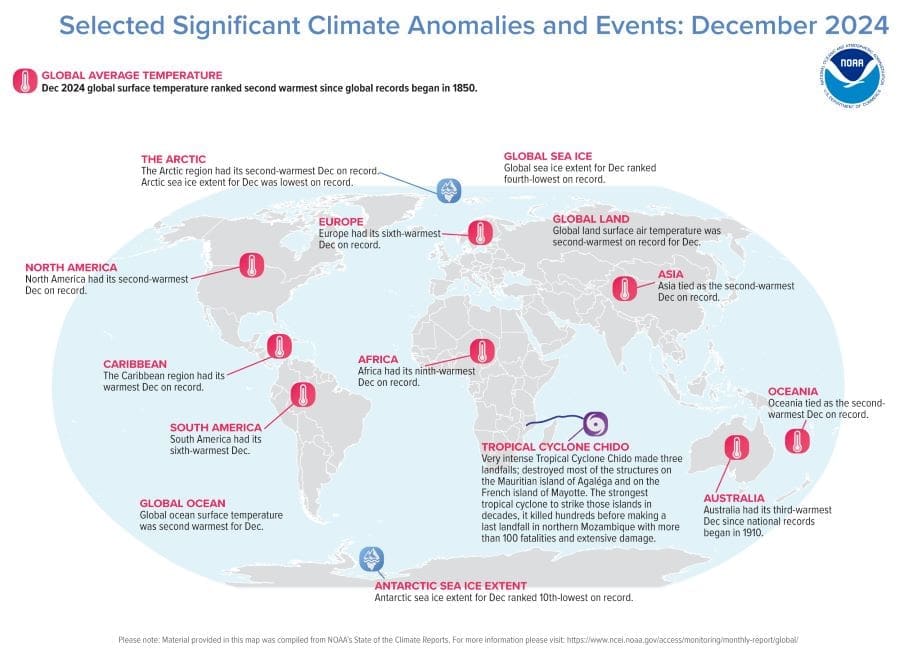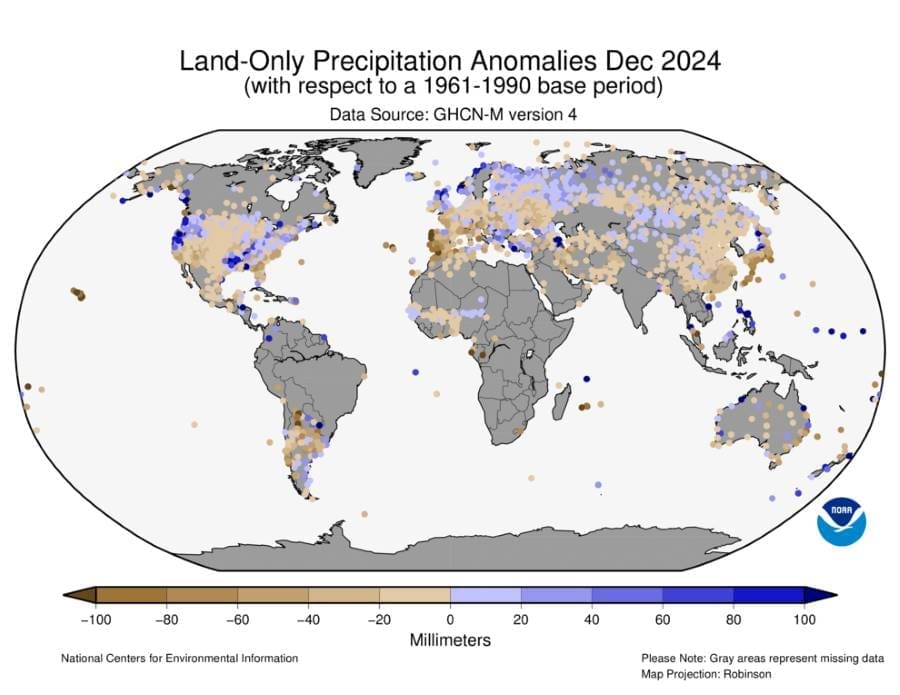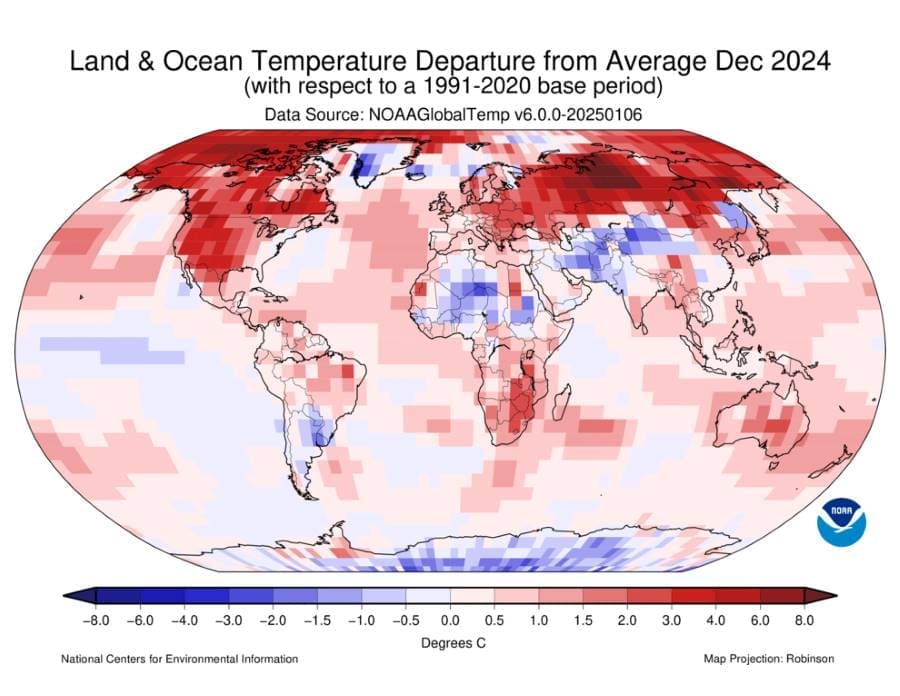In Brief:
- December global temperature reached 1.26°C above the 20th-century average, marking the second-warmest December on record.
- Northern Hemisphere snow cover ranked 13th lowest; Eurasia and North America saw significant below-average coverage.
- Global sea ice extent was the fourth-lowest for December; Arctic sea ice reached a record low.
- Tropical Cyclone Chido was the only named storm, impacting southeast Africa.
- Regional analyses showed notable warmth across much of the globe, with contrasting cooler anomalies in regions like Antarctica and parts of Greenland.
- Precipitation patterns varied significantly, with record dryness in parts of South America and wetter-than-average conditions in regions like Scandinavia and the U.S. Midwest.

A warm December with global implications
December 2024 stood out as one of the warmest Decembers in recorded history, with the global surface temperature 1.26°C (2.27°F) above the 20th-century average of 12.2°C (54.0°F). While slightly cooler than December 2023, which set a record, this month marked the 49th consecutive December with above-average temperatures since 1975.
The Northern Hemisphere experienced its second-warmest December on record, with land and ocean temperatures alike registering significant anomalies. Arctic temperatures rose 4.33°C (7.79°F) above average, while Arctic sea ice extent dropped to its lowest December level since measurements began. The Southern Hemisphere ranked third warmest, with ocean temperatures reaching their second-highest December levels.
La Niña conditions emerged during the month, transitioning from neutral ENSO and contributing to cooler-than-average waters in the eastern equatorial Pacific. NOAA projects La Niña to persist through early 2025, potentially moderating global temperature trends temporarily.
Snow and ice continue their retreat
December saw significant reductions in snow and ice extent. Northern Hemisphere snow cover ranked 13th lowest in 59 years, with Eurasia and North America seeing considerable deficits. Global sea ice extent was the fourth-lowest for December in the 45-year satellite record.

The Arctic sea ice extent of 4.41 million square miles marked the lowest December level on record. Antarctic sea ice extent, while less extreme, was the 10th lowest at 3.66 million square miles. These patterns are consistent with longer-term warming trends, which are reshaping polar ecosystems and influencing weather patterns globally.
Regional warmth and its disparities
Warm anomalies dominated much of the globe. Regions such as central Russia, southeastern Africa, and the western U.S., including Alaska, recorded temperatures exceeding 4°C (7.2°F) above average. Western Siberia stood out with anomalies surpassing 6°C (10.8°F).

Record warm conditions covered 6.6% of the Earth’s surface, a reduction from 11.7% in December 2023. Cooler anomalies were less extensive but included most of the Antarctic, parts of Greenland, and specific regions in Asia and Africa.
National highlights underscored this variability. Germany recorded a December 1.2°C warmer than the 1991–2020 average, while Norway’s temperatures were 1.7°C above this baseline. In contrast, Pakistan reported a December 0.49°C cooler than its 1991–2020 average.
Precipitation extremes bring drought and floods
Precipitation patterns varied widely, driven by regional climatic factors. Below-average rainfall afflicted regions such as Bolivia, Argentina, and southwestern Europe, where record or near-record dryness was observed. Mozambique faced a drought during December, exacerbating water scarcity issues.
In contrast, wetter-than-average conditions prevailed across the U.S. Midwest, parts of Central America, and large swaths of western Russia and Scandinavia. Australia saw rainfall 36% above its December average, with wetter conditions dominating much of the country except for parts of its southeastern regions.
Storm activity was minimal for December, with only one named tropical system — Intense Tropical Cyclone Chido — impacting Mozambique, Mayotte, and Malawi, causing significant disruption.
A continued call to monitor and adapt
The trends observed in December 2024 highlight the complex interplay of natural variability and long-term climate change. With global temperatures climbing steadily and regional anomalies becoming more pronounced, monitoring and adaptation remain essential to understanding and mitigating climate impacts.
Source: NOAA National Centers for Environmental Information
Featured image credit: Courtesy NASA/JPL-Caltech




